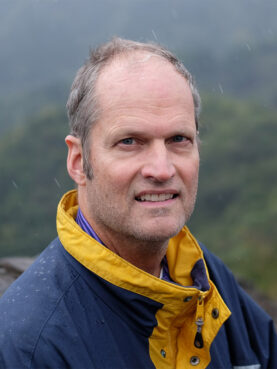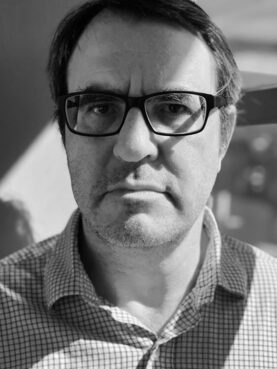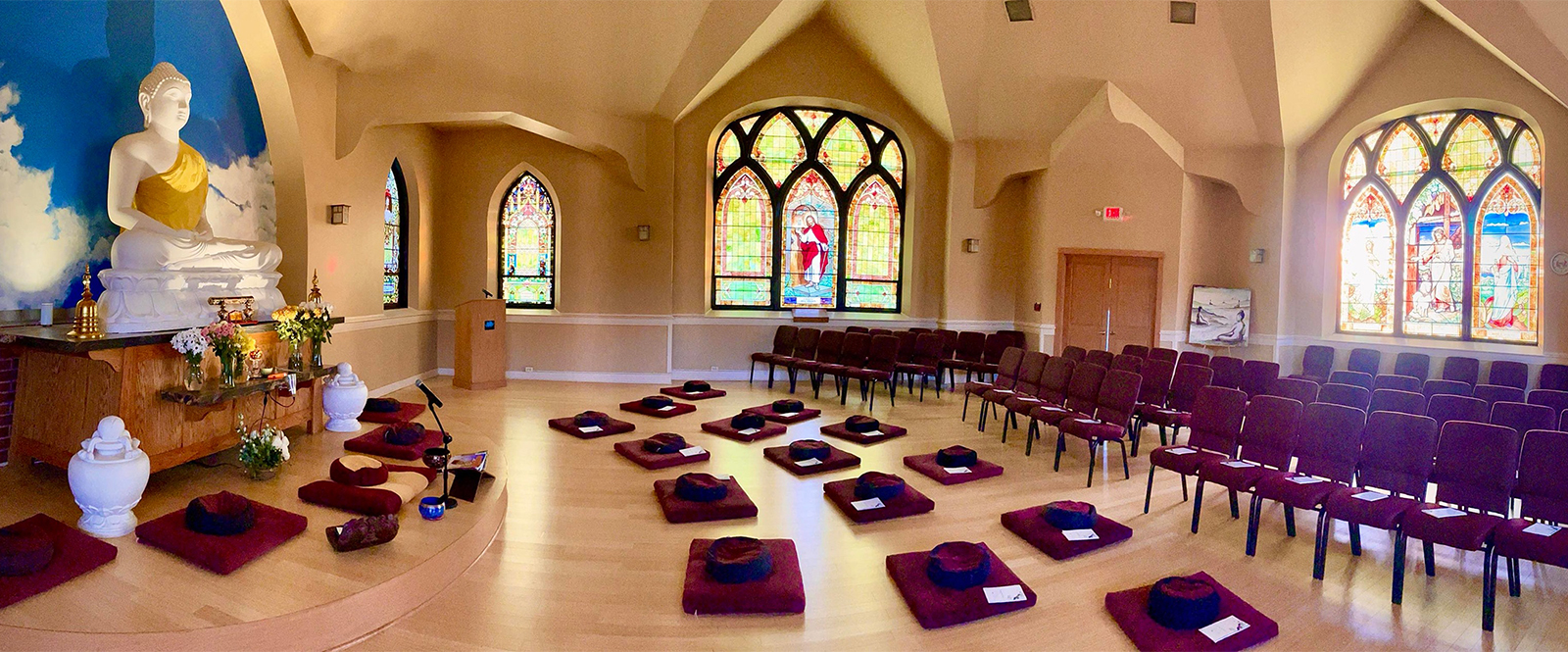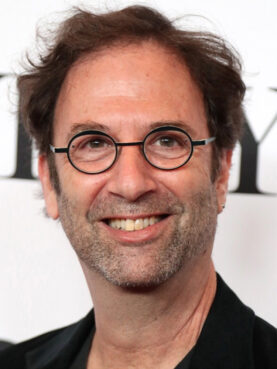WOODSTOCK, Ill. (RNS) — Woodstock Willie, perhaps the second most famous groundhog in the country, saw his shadow Thursday (Feb. 2), predicting another six weeks of winter.
The early morning prediction, viewed by a crowd who braved below-freezing temperatures, was part of a five-day celebration of the release of “Groundhog Day,” a now classic film starring Bill Murray released in 1993 and filmed in this small town about an hour northwest of Chicago.
Despite almost no mention of God or religion, the filmmakers made one of the more spiritual films of the era.
“You can argue about whether it is a Buddhist, Christian or Jewish movie — but it is deeply religious,” said author and Boston University religion professor Stephen Prothero, who has shown the film in his classes.
“Groundhog Day” tells the story of Phil Connors, a self-centered TV weatherman sent to Punxsutawney, Pennsylvania, to cover the annual Groundhog Day festival at Gobbler’s Knob, where it’s been celebrated since 1887. (The movie’s creators chose to film it in Woodstock because the city’s historic square and downtown shops meant most of the film could be shot nearby.)

Stephen Prothero. Photo by Meera Subramanian
A blizzard blocks the departure of Connors and his colleagues, forcing them to stay overnight. But when he awakes a second morning to the same song on the radio — Sonny and Cher’s 1965 hit “I Got You Babe” — Connors discovers he’s stuck reliving the same day, over and over again.
No matter what he does, Connors wakes up every morning to the same song, in the same room at a Woodstock bed-and-breakfast. Not even death gives him release.
It turns out that immortality and reincarnation, at least for Connors, is not such a good thing.
When Americans think of reincarnation, they think it means an opportunity for a new life. But the Buddhist idea of reincarnation is actually a curse, said Prothero, because it often means reliving the same life over and over.
Brook Ziporyn, a professor of Chinese religion, philosophy and comparative thought at the University of Chicago, said Connors appears to be stuck in what Buddhists call “samsara” — a cycle of death and rebirth that’s marked by suffering. The fact that Connors is stuck in a place he despises reinforces that idea.

Brook Ziporyn. Photo by Howard Wallach
“It has to be in a place that he hates,” said Ziporyn, who has taught about the Buddhist themes in “Groundhog Day” and other films, including “What About Bob?”, which also starred Bill Murray. During the movie, Connors discovers his eternal life is without consequences. At first, he uses that as a license to do whatever he wants by indulging in all seven deadly sins. He robs an armored car, steals the groundhog, seduces women in town by lying to them and gorges himself at the local diner, for starters.
All of that proves meaningless.
He finally has a moment of clarity when he is rejected by his colleague Rita, played in the film by Andie MacDowell. Despite his best efforts, and repeated failure, he can’t win her heart because she sees through him.
“I could never love someone like you. You only love yourself,” she tells him.
“That’s not true,” Connors replies. “I don’t even like myself.”
Connors begins to change at that moment, not because God or a spiritual figure tells him to, but because in the end, being a jerk makes him unhappy. He devotes his time to improving himself — learning to play the piano, for example — and to doing good deeds. He eventually practices most of the so-called seven heavenly virtues — things like patience, diligence, kindness and humility.
By giving up his own ambitions, he eventually wins Rita’s heart.
“It is not that he has a revelation of God’s law,” said Ziporyn. “He just realizes that the only thing he can do that makes himself meaningful is to start engaging others.”

Bhante Amitha with a groundhog mascot in Woodstock, Illinois. Courtesy photo
Bhante Amitha, the deputy abbot of the Blue Lotus Temple, a Buddhist center located about a block from where “Groundhog Day” was filmed, said he’d only seen the trailer for the movie, so he could not comment on the specific religious themes in it.
A Theravada monk originally from Sri Lanka, Bhante Amitha said meditation and good works can help people find relief from the stresses and worries of life. About 60 people, most of whom were brought up in Christian or Jewish traditions, take part in the regular Saturday meditation classes at the temple, according to the abbot.
He said that striving and attachment and anger can be like poisons — and that relief can be found in meditation and good deeds. Those deeds and compassion can help people escape the cycle of samsara.
“Our main goal is to practice meditation and generosity and having a virtuous life,” he said.
Tessa Fisher, the office manager for the temple and an adherent, said she’d seen “Groundhog Day” a few times but had never really thought about the parallels between Buddhist teaching and the film. But she said people who come to the temple, housed in what was built as a Congregationalist church, are often struggling.
“They are on a spiritual journey,” she said. “They are seeking something. And by practicing or reading they have this kind of awakening in themselves. They realize they need to give love and kindness to themselves so that they can do good to others.”

Dhamma hall in the Blue Lotus Temple in Woodstock, Illinois. Courtesy photo
In that way, she said, they are like the main character of “Groundhog Day.”
“They take that step and say I want to break out of my struggles.”
Part of the genius of “Groundhog Day” is that it is open to interpretation. The film’s screenwriter, Danny Rubin, has said he’s heard from preachers and rabbis and Buddhist practitioners and grief counselors, all of whom say the movie reflects their teaching.
The first draft of the screenplay for the movie, published in Rubin’s 2012 book “How to Write Groundhog Day,” included scenes with a Catholic priest and a street preacher.
“Forswear your ways, your greed, your selfishness,” the street preacher says in that first draft. “Realize your true destiny, for only then you will live in the world.”
Those scenes were removed as Rubin and director Harold Ramis revised the screenplay. In his book, Rubin included a series of lessons he learned from the process of writing and rewriting the movie.

Danny Rubin. Courtesy photo
Those lessons included the importance of perspective: In the movie, Connors experiences both the worst day of his life and the best day. Things change for him, Rubin wrote, as he changes the way he looks at things. Rubin wrote that he also learned the importance of paying attention — that Connors learns to see the people he encounters every day and to hear their stories, rather than just focusing on himself.
Rubin also learned that even a single day in a small town can be filled with possibilities.
“Every day held an infinite number of stories,” he wrote.
Ramis, who died in 2014, said in a short documentary about the making of “Groundhog Day” that the film reflected his philosophy of life.
What Danny and I both wanted to say with the movie is, you can live better,” he said. “You can have a better life. People can change. And when you do change you get those rewards you think you want from life.”
Author and religion professor Brent Rodriguez-Plate, who has often taught “Groundhog Day” in classes about religion and film, said removing explicitly religious elements from the script helps give the film its power.
People are free to interpret the film however they want, he said.
“The fun thing about it is that it is so completely secular,” said Rodriguez-Plate. “It’s the Hollywood myth that trumps all the other religious myths — annoying man finally gets his stuff together and figures out how to be worthy of the beautiful woman. That’s why we keep coming back to it.”

